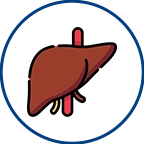Pressure Ulcers

Pressure ulcers, also known as bedsores or pressure sores, are localized injuries to the skin and underlying tissue. They commonly develop in individuals who are immobile or have limited mobility, such as those who are bedridden or use wheelchairs. Pressure ulcers can be a cause of significant discomfort and pose a risk for complications if not properly managed. Understanding the causes, symptoms, and treatment options for pressure ulcers is crucial for their prevention and effective care.
Home Sample Collection
What causes pressure ulcers?
Pressure ulcers develop when prolonged pressure is applied to an area of the skin, restricting blood flow to the tissues. This pressure disrupts the delivery of oxygen and nutrients, leading to tissue damage. Other factors that contribute to the development of pressure ulcers include friction, shear forces, moisture, poor nutrition, impaired circulation, and decreased mobility. Pressure ulcers commonly occur over bony prominences, such as the hips, heels, sacrum, and elbows.
What are the symptoms of pressure ulcers?
The symptoms of pressure ulcers may vary depending on the severity and stage of the ulcer. In the early stages, a pressure ulcer may present as redness or discoloration of the skin that does not fade when pressure is relieved. As the ulcer progresses, the skin may break down, forming an open wound. Other signs and symptoms include swelling, tenderness, warmth, changes in skin texture, blistering, and the presence of pus or a foul odor. The severity of a pressure ulcer is often classified into stages based on the depth of tissue involvement.
How can pressure ulcers be prevented?
Preventing pressure ulcers involves a multi-faceted approach. This includes regular repositioning or shifting of body weight to relieve pressure on vulnerable areas, maintaining good hygiene and skin care, using supportive devices such as specialized mattresses or cushions, managing moisture and controlling incontinence, ensuring proper nutrition and hydration, and promoting physical activity and mobility when possible. Caregivers should also be educated on the importance of early detection and prevention strategies.
How are pressure ulcers diagnosed?
The diagnosis of pressure ulcers is typically made based on a thorough physical examination of the affected area. The healthcare professional will assess the appearance of the skin, noting any redness, discoloration, or open wounds. The severity of the ulcer may be determined by the depth of tissue involvement. In some cases, additional tests, such as imaging studies or tissue biopsies, may be ordered to assess the extent of tissue damage or to rule out other potential causes.
What is the treatment for pressure ulcers?
The treatment of pressure ulcers aims to promote wound healing, prevent infection, and relieve symptoms. Treatment options may include cleaning and dressing the wound with appropriate materials, removing dead or damaged tissue (debridement), applying specialized dressings or topical medications, using negative pressure wound therapy, managing pain, addressing any underlying medical conditions, and providing support for the individual's overall health and well-being. Severe cases may require surgical intervention.
Can pressure ulcers lead to complications?
Yes, pressure ulcers can lead to various complications if not properly managed. These complications include infection, cellulitis (skin infection), osteomyelitis (bone infection), sepsis (bloodstream infection), delayed wound healing, the formation of deep tissue injuries or abscesses, and the potential for the ulcer to worsen or expand in size. Proper wound care, infection control, and diligent monitoring can help prevent complications and promote healing.
When should I seek medical attention for a pressure ulcer?
It is important to seek medical attention if you or a loved one develops a pressure ulcer, especially if the ulcer is worsening, causing severe pain, or showing signs of infection such as increased redness, swelling, warmth, or discharge. Prompt medical attention can help prevent further complications and ensure appropriate treatment is provided.
Can pressure ulcers be treated at home?
The treatment of pressure ulcers can vary depending on the severity and stage of the ulcer. While mild cases may be managed with appropriate wound care techniques at home, it is important to consult with a healthcare professional for an accurate diagnosis and treatment plan. They can provide guidance on proper wound care, recommend suitable dressings or medications, and monitor the progress of the ulcer. Regular follow-up visits are essential to ensure effective treatment and prevent complications.
Can pressure ulcers reoccur after healing?
Yes, pressure ulcers can reoccur if preventive measures are not taken. Once a pressure ulcer has healed, it is important to continue implementing strategies to reduce the risk of recurrence. This includes maintaining good skin hygiene, using appropriate support surfaces or devices, maintaining mobility and physical activity, ensuring proper nutrition, and conducting regular skin assessments to identify any early signs of pressure-related skin damage.
What healthcare professionals should I consult for pressure ulcer management?
Individuals with pressure ulcers should consult a healthcare professional experienced in wound care and management. This may include physicians, wound care specialists, dermatologists, nurses, or physical therapists. A multidisciplinary approach may be necessary to address all aspects of care, including wound healing, infection control, pain management, nutrition, and mobility.
Book Your Slot
Our Locations Near You in Hyderabad
3KM from Banjara Hills
1.9KM from Yusufguda
3KM from Madhura Nagar
5KM from Shaikpet
Profiles
- Cardiac Risk Profile
- Pituitary marker Profile
- Rheumatoid Arthritis Profile
- Dengue Fever Panel
- Lung Cancer Panel 1 Complete Molecular
- Gastroenteritis Screening Panel
- Thyroid Profile (T3,T4,TSH), Serum
- Pancreatic Marker Profile
- STD profile
- Androgen Profile
- Lipid Profile, Serum
- Pancreatic(acute)Profile
- PCOD Profile
Radiology
Pathology Tests
- Glucose Fasting (FBS),Sodium Fluoride Plasma
- Creatinine, Serum
- Glycosylated Hemoglobin (HbA1C)
- Vitamin B12 (Cyanocobalamin), Serum
- Thyroid Stimulating Hormone (TSH) Ultrasensitive, Serum
- Complete Urine Examination (CUE), Urine
- Liver Function Test (LFT),Serum
- Dengue (IgG & IgM), Serum
- Dengue Antigen (Ns1) Rapid, Serum
- C-Reactive Protein (CRP), Serum
- Widal (Slide Method), Serum
- Total IgE, Serum




